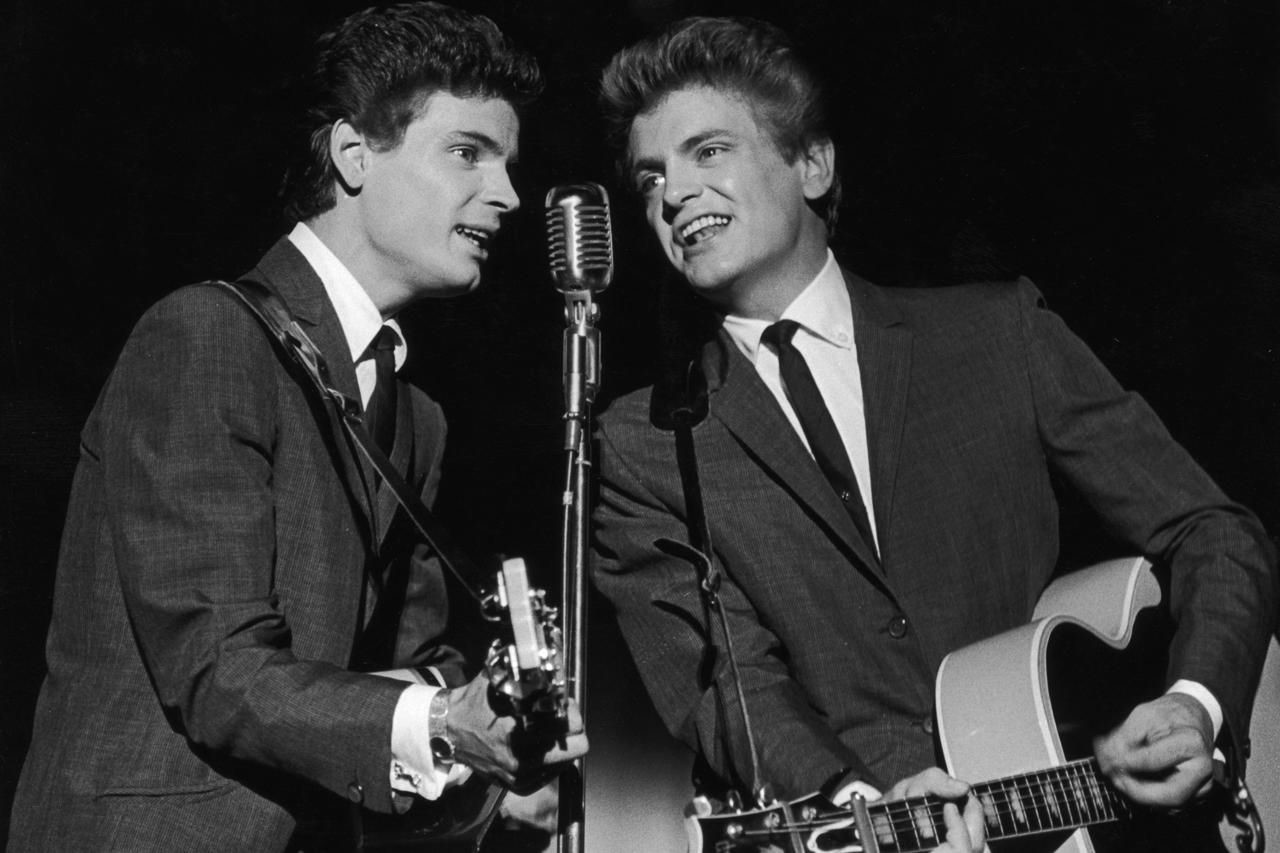
Music from the 1950s marks a pivotal era that reshaped the landscape of what we listen to today. 1950s music was a blend of rhythm and blues, rock 'n' roll, jazz, and country, creating a diverse soundtrack that still resonates. This period introduced icons like Elvis Presley, Chuck Berry, and Johnny Cash, whose influences are undeniable. But beyond the big names, this decade was rich with innovation, cultural shifts, and technological advancements in music production. From vinyl records to jukeboxes, the way people experienced music was transforming. In this introduction, we'll uncover 22 fascinating facts about 1950s music, offering a glimpse into how this era's melodies and rhythms became the foundation of modern music genres. Join us as we journey back to a time of jukebox jives and rock 'n' roll vibes, uncovering the legacy of 1950s music.
The Birth of Rock 'n' Roll
In the 1950s, music underwent a revolutionary transformation, marking the birth of rock 'n' roll. This genre, blending elements of blues, country, and rhythm and blues, quickly became a defining sound of the decade.
-
Elvis Presley, often hailed as the "King of Rock 'n' Roll," burst onto the scene in the mid-1950s, captivating audiences with his dynamic performances and charismatic presence.
-
Chuck Berry is another pivotal figure, known for his innovative guitar playing and storytelling in songs like "Johnny B. Goode." His music laid the groundwork for future rock musicians.
The Rise of Teen Idols
The 1950s also saw the emergence of teen idols, who became massively popular among the younger generation. These artists were often characterized by their clean-cut images and pop-oriented music.
-
Ricky Nelson emerged as a teen idol through his appearances on the television show "The Adventures of Ozzie and Harriet," transitioning into a successful music career with hits like "Hello Mary Lou."
-
Paul Anka was another teen sensation, with his hit "Diana" becoming one of the best-selling singles by a Canadian artist.
Jazz and the Beat Generation
While rock 'n' roll dominated the airwaves, jazz experienced a renaissance, influencing the Beat Generation and intellectuals. The improvisational nature of jazz mirrored the desire for spontaneity and authenticity.
-
Miles Davis released "Kind of Blue" in 1959, an album considered by many as the greatest jazz record of all time.
-
Dave Brubeck introduced odd time signatures to jazz, broadening its appeal with albums like "Time Out," featuring the iconic track "Take Five."
Country Music and the Nashville Sound
Country music evolved significantly during the 1950s, with the Nashville Sound becoming prevalent. This style combined traditional country with pop music elements, creating a smoother, more polished sound.
-
Patsy Cline became one of the leading figures of the Nashville Sound, with timeless hits like "Crazy" and "Walking After Midnight."
-
Johnny Cash, while often associated with the rawer side of country, also contributed to its mainstream appeal with songs like "I Walk the Line."
The Influence of Television and Radio
Television and radio played crucial roles in spreading 1950s music, introducing new genres and artists to a wide audience.
-
"American Bandstand," hosted by Dick Clark, became a popular television show that showcased rock 'n' roll and teen idols, influencing music trends and youth culture.
-
Radio stations began to play more rock 'n' roll, jazz, and country music, breaking down racial barriers and bringing diverse musical styles to the forefront of American culture.
The Golden Age of Vinyl
The 1950s were also significant for the rise of vinyl records, which became the primary medium for music consumption.
-
Vinyl allowed for longer play times, leading to the popularity of the 12-inch album format.
-
High-fidelity recording techniques improved the quality of vinyl records, enhancing the listening experience for audiences.
The Legacy of 1950s Music
The music of the 1950s laid the foundation for many genres that followed, influencing countless artists and shaping the future of music.
-
Rock 'n' roll's rebellious spirit would inspire the rock music of the 1960s and beyond.
-
The innovations in jazz during the 1950s paved the way for avant-garde and free jazz movements.
-
Country music's evolution continued, with the Nashville Sound influencing the development of country pop.
-
Teen idols of the 1950s set the stage for boy bands and pop stars in subsequent decades.
-
Television and radio's role in promoting music set a precedent for music videos and online streaming platforms.
-
Vinyl records experienced a resurgence in popularity, demonstrating the lasting appeal of the 1950s music format.
-
The integration of different musical styles broke down cultural barriers, contributing to a more diverse musical landscape.
-
Artists like Elvis Presley and Chuck Berry remain icons, celebrated for their groundbreaking contributions to music.
-
Jazz albums like "Kind of Blue" continue to be revered and studied by musicians and fans alike.
-
The legacy of 1950s music is evident in the ongoing popularity of its songs, covered and sampled by modern artists across various genres.
A Final Note on the Golden Era of Music
Diving back into the 1950s, we've journeyed through a time where music was more than just sound; it was a movement. Rock 'n' roll took center stage, bringing with it icons like Elvis Presley and Chuck Berry, who forever changed the landscape of music. This era wasn't just about the birth of rock 'n' roll, though. Jazz, blues, and country music also saw significant evolution, with legends like Miles Davis and Johnny Cash leaving indelible marks on their genres. The 1950s were a pivotal decade that set the stage for the musical revolutions that would follow. It was a time when vinyl records and jukeboxes were kings, and teenagers became a major force in driving music trends. Reflecting on this era, it's clear that the roots of much of today's music can be traced back to the vibrant, eclectic sounds of the 1950s.
Was this page helpful?
Our commitment to delivering trustworthy and engaging content is at the heart of what we do. Each fact on our site is contributed by real users like you, bringing a wealth of diverse insights and information. To ensure the highest standards of accuracy and reliability, our dedicated editors meticulously review each submission. This process guarantees that the facts we share are not only fascinating but also credible. Trust in our commitment to quality and authenticity as you explore and learn with us.


